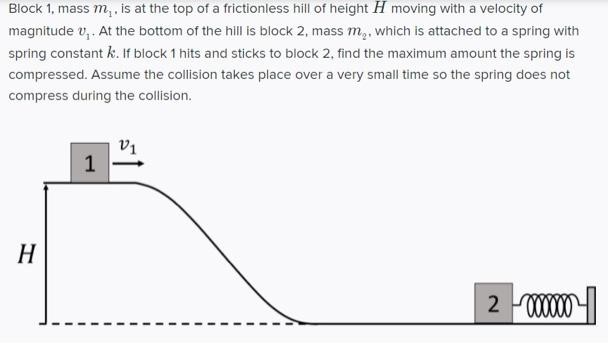Block 1 , mass m1, is at the top of a frictionless hill of height H moving with a velocity of magnitude v1. At the bottom of the hill is block 2, mass m2, which is attached to a spring with spring constant k. If block 1 hits and sticks to block 2, find the maximum amount the spring is compressed. Assume the collision takes place over a very small time so the spring does not compress during the collision.
